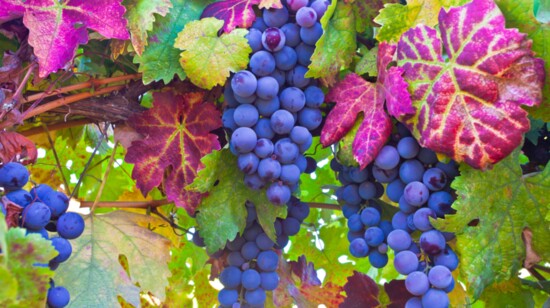During a two-week west coast visit in September, my wife and I visited family who live in Vallejo, California, about ten minutes from the town of Napa. This trip allowed us to spend a day and a half in Napa Valley.
Historically, Napa Valley is known as America’s premier wine-growing region. Because of where it is situated geographically, Napa Valley mimics the climate and feel of the Mediterranean. The diurnal temperature shifts of daytime highs and nighttime lows allow grapes to ripen slowly. The environmental combination of soil, protective hills, and surrounding mountains make this part of California ideal for growing wine-making grapes. The Napa Valley region is home to some 500 wineries, 1000 brands, and approximately 90 tasting rooms.
September temperatures in Napa usually range from 75 to 85 degrees, but the temperatures were much warmer in September this year. Temperatures in San Francisco and the surrounding bay area reached the mid-nineties. Despite the heat, Napa Valley was picturesque and beautiful; filled with golden pastures and gentile rolling hills, intermittently striped with lush green rows of grape vines, and other vegetation. The wines we sampled from three producers were outstanding.
If Napa Valley is a bucket list item or if you are a wine lover, I highly recommend visiting for at least a day or longer. Anytime you visit San Francisco or Northern California, give some serious thought about taking a trip to Napa Valley.
Here are a few things you should consider.
Research the Vineyards
If your goal is to discover and learn about different wines, develop a plan. Figure out what types of grapes are harvested, what wines are produced, and what you can glean from the experience. Be open-minded. Research each vineyard you plan to visit and be sure to check out the event calendar for Napa Valley before you go. During our visit, we attended a Culinary Institute of America (CIA) series event celebrating regional American cuisine. The event was part of the CIA’s Annual Summer Food and Cultural Series and featured 2006 CIA graduate and classically trained chef, master sommelier Carlton McCoy, Managing Partner of Lawrence Wine Estates, and host of the CNN documentary series “NOMAD with Carlton McCoy.”
Plan your excursion
You can book flights into San Francisco or Oakland and Napa has a small regional airport. The Bay Area Rapid Transit (BART) System affords movement through the region easily, especially if you don’t plan on renting a car. Here is the BART link: https://www.bart.gov/planner. If you plan to stay in San Francisco, You can catch the ferry from San Francisco to Vallejo, routes and fees can be found at https://sanfranciscobayferry.com. Take your time and limit your visits to no more than 3-4 vineyards per day. If you plan to drive, please have a designated driver.
Make reservations
Most vineyards will have a set selection of wines to sample each day or season. This usually includes 4 or 5 mixed seasonal selections, with maybe one or two new releases. Most vineyards require reservations and have designated tasting rooms for club members on their properties. Most will also require a fee or charge with their reservations. Again, we visited three vineyards, and each one required a fee for the tasting. However, you can get around the fee if you become a club member, purchase a set amount of wine, or are accompanied by a club member.
Plan a trip and enjoy the richness of the Napa Valley!
